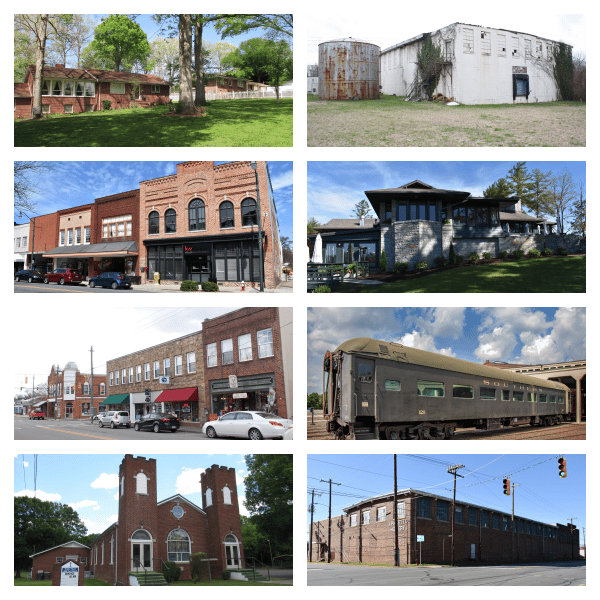
Last Updated on June 5, 2022 4:52 pm
RALEIGH
Jun 3, 2022
The North Carolina Department of Natural and Cultural Resources is pleased to announce that one district boundary increase, two districts and five individual properties across the state have been added to the National Register of Historic Places. The following properties were reviewed by the North Carolina National Register Advisory Committee and subsequently nominated by the North Carolina State Historic Preservation Officer and forwarded to the Keeper of the National Register for consideration for listing in the National Register.
“The addition of these North Carolina sites to the National Register of Historic Places is important because it will help preserve our shared history,” said Secretary Reid Wilson, N.C. Department of Natural and Cultural Resources. “They are part of our state’s rich and diverse story and reaffirm our national leadership in the historic preservation movement.”
The listing of a property in the National Register places no obligation or restriction on a private owner using private resources to maintain or alter the property. Over the years, various federal and state incentives have been introduced to assist private preservation initiatives, including tax credits for the rehabilitation of National Register properties. As of Jan. 1, over 4,124 historic rehabilitation projects with an estimated private investment of over $3.409 billion have been completed.
In Central North Carolina
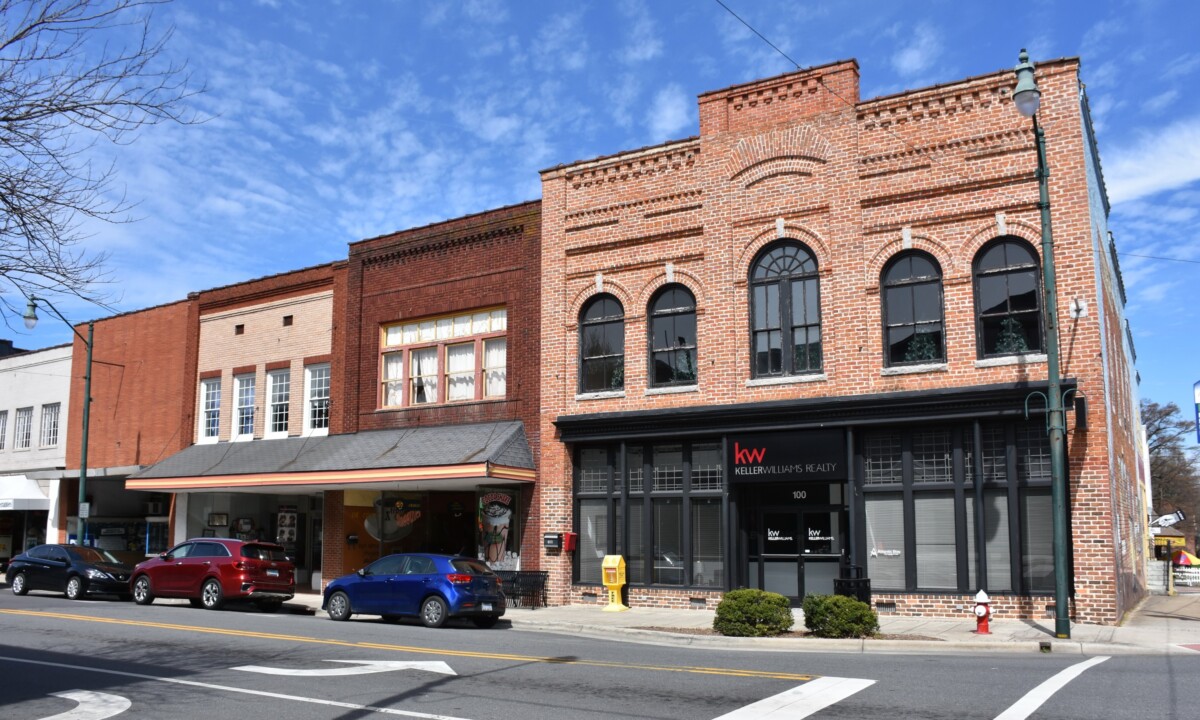
Asheboro Downtown Historic District,
Asheboro, Randolph County, listed 4/14/2022
The Asheboro Downtown Historic District is eligible for the National Register due to its local significance under Criterion A in the areas of commerce, industry, politics/government, and social history as well as Criterion C for architecture. This intact and cohesive group of early- to mid-twentieth-century commercial, industrial, and institutional buildings, a church, and two residential buildings manifests the community’s industry driven commercial expansion from the early twentieth century through the 1970s. The district encompasses ninety-two resources that contribute to its significance with architectural types and styles ranging from Italianate to Craftsman, Classical Revival, Georgian Revival, Commercial Style, Art Deco, Art Moderne, Spanish Revival, Modernist, and Brutalist that predominated in North Carolina communities as the twentieth century progressed. The locally important district’s period of significance begins in 1903, with the completion date of its two oldest buildings, and ends in 1972.

Aurora Cotton Mills Finishing Plant – Baker-Cammack Hosiery Mills Plant,
Burlington, Alamance County, listed 4/13/2022
The textile industry was paramount in Burlington, North Carolina from the late-nineteenth through the late-twentieth century. The 1906 Aurora Cotton Finishing Plant – Baker-Cammack Hosiery Mills Plant, expanded through the early 1960s, is eligible for the National Register of Historic Places under Criterion A in the context of local industry, significant as part of a finite class of resources which had an outsized impact on Burlington’s economy and physical growth. The period of significance begins in 1906, when the first portion of the building was erected, and continues through 1972. The Aurora Cotton Finishing Plant – Baker-Cammack Hosiery Mills Plant was associated with two of the primary textile manufacturers that drove Burlington’s economic and physical growth from the late-nineteenth century through the late-twentieth century.
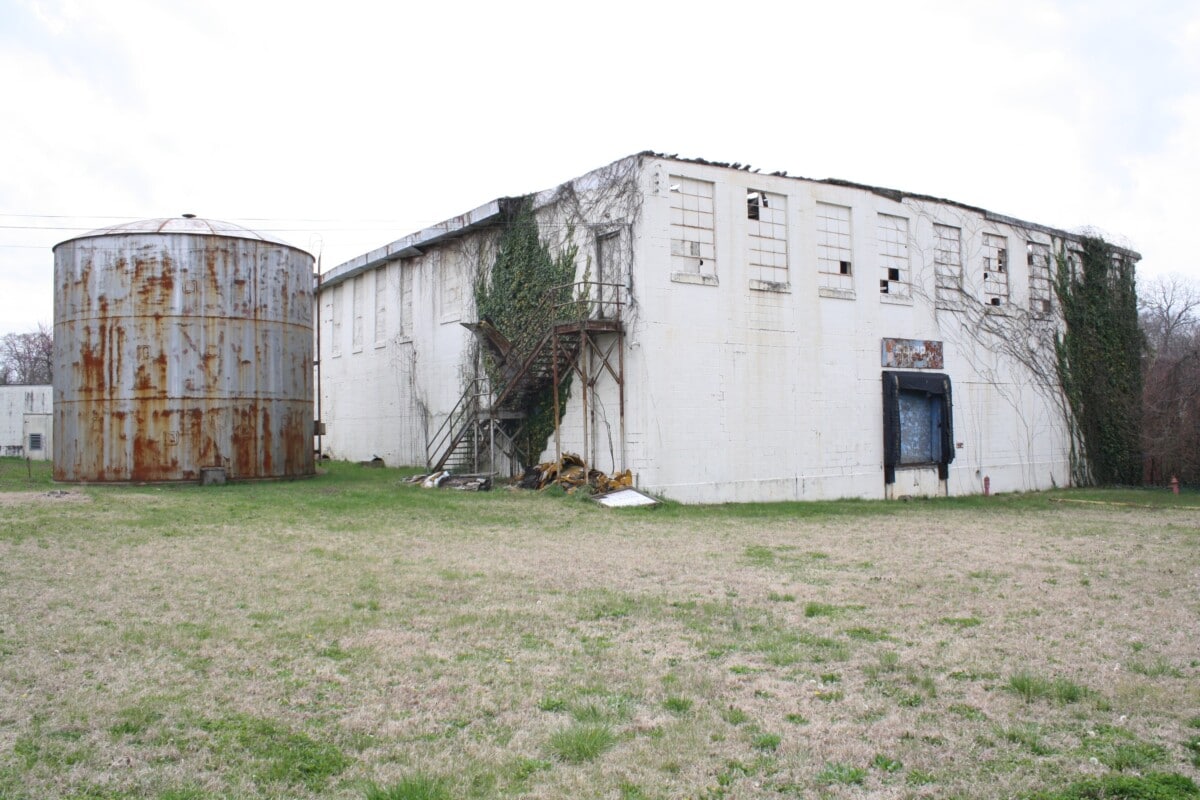
Black Ox – Duplan Corporation Mill,
Lincolnton, Lincoln County, listed 4/14/2022
The Black Ox– Duplan Corporation Mill is eligible for listing in the National Register of Historic Places at the local level under Criterion A in the area of Industry for its significant association with the industrial development of Lincolnton and Lincoln County, North Carolina. Like most counties in the Piedmont region, textile manufacturing was a dominant industry in Lincoln County from the late 1800s through the mid-1900s. The Black Ox – Duplan Corporation Mill is one of only eight mills that remain extant in Lincoln County, and one of only three in the county seat of Lincolnton. The Black Ox – Duplan Corporation Mill embodies the evolution of the textile industry from the production of cotton to rayon and other synthetics as well as the changing nature of corporate business practices in response to the volatile economic and labor market from the early 1900s through the third quarter of the twentieth century. The property’s Period of Significance begins in 1920, the construction date of the oldest portion of the mill, which was first erected as a cotton mill. It ends in 1957, when the Duplan Corporation shifted its production of rayon to other plants and closed the Lincolnton mill.

Dallas Historic District (Boundary Increase),
Dallas, Gaston County, listed 4/13/2022
The Dallas Historic District (Boundary Increase) expands the existing 1973 Dallas Historic District which encompasses the heart of town, centered on the public square laid out in the 1840s when Dallas was designated the county seat of newly-formed Gaston County. The original nomination listed the district under Criterion C in the area of Architecture and under Criterion A in the area of Politics/Government. The boundary increase is eligible for the National Register at the local level under Criterion C in the architecture area of significance for the quality and diversity of its historic architecture, and under Criterion A in the education area of significance for the inclusion of the Dallas Graded and High School, which is National Register-listed in that area as well as in architecture. Nationally popular architectural styles found in the district include Gothic Revival, Italianate, Queen Anne, Romanesque Revival, Gothic Revival, Colonial Revival, Craftsman, Period Cottage, Minimal Traditional, and Ranch. The period of significance begins ca. 1880, the approximate date of the oldest resource and extends to ca. 1971, the date of several contributing Ranch houses.
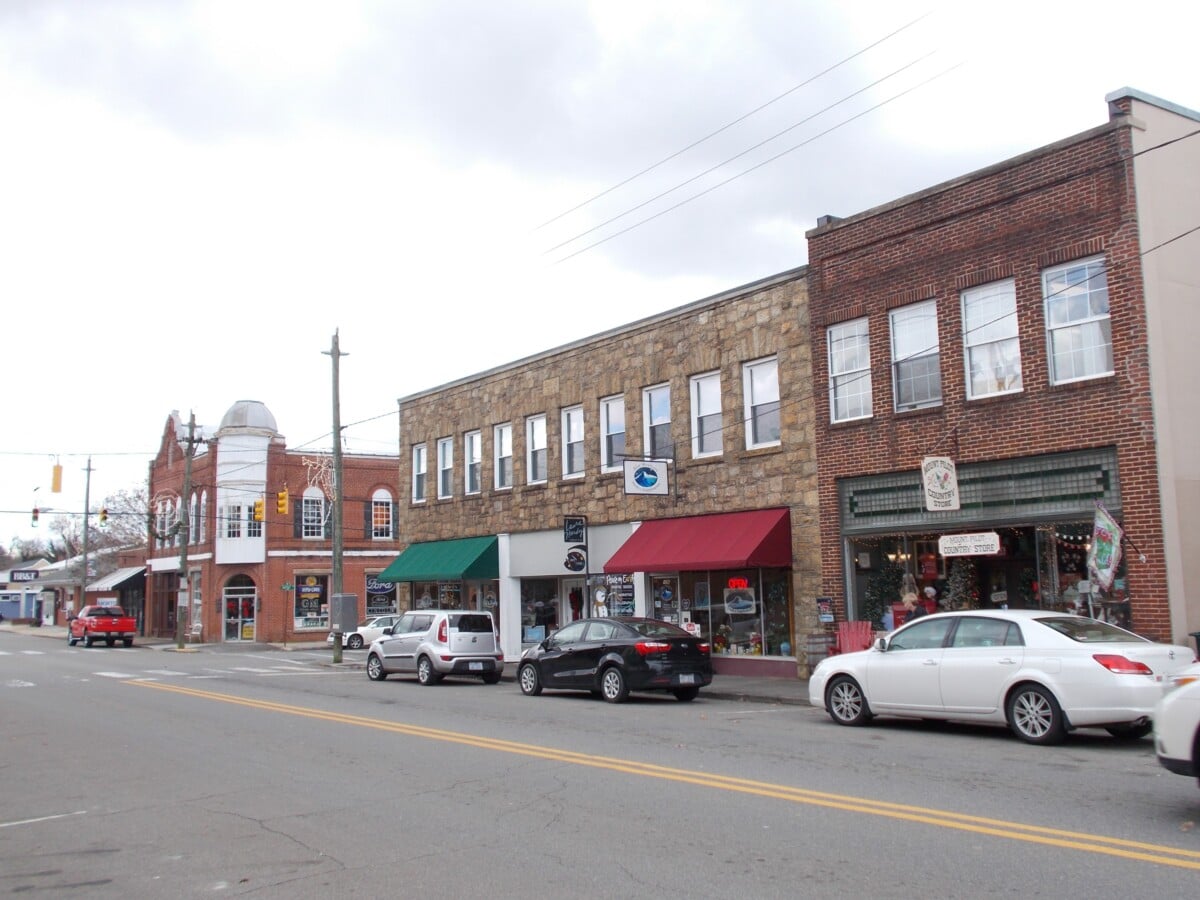
Pilot Mountain Downtown Historic District,
Pilot Mountain, Surry County, listed 4/14/2022
The Pilot Mountain Downtown Historic District is significant at the local level under Criterion A in the area of Commerce as the historic commercial heart of Pilot Mountain, eastern Surry County’s principal trade and market center, encompassing a wide range of historic commercial building types associated with the trading of goods, services, and commodities. The district is also locally significant under Criterion C in the area of Architecture for its inclusion of the majority of the downtown’s historic commercial buildings, which embody distinctive characteristics of type, period, and method of construction and represent a significant and distinguishable entity that includes key buildings of architectural of historical note. The period of significance extends from ca. 1900, the approximate date of the earliest known surviving buildings, to 1970, embracing Modernist and Historicist construction through 1970, notably the completion of the Modernist Farmers Bank and the construction of the Historicist Surry Drug Company Building façade that year.

Southern Railway Passenger Car Number 1211,
Spencer, Rowan County, listed 4/12/2022
Southern Railway passenger car number 1211, built by the Pullman Company in 1917 and fully remodeled in 1953 by Southern Railway, is an all-steel, heavyweight passenger coach partitioned to comply with Jim Crow car laws that went into effect throughout the South in the late nineteenth century. Built without partitions, Southern Railway likely divided car number 1211 to seat Black and White passengers in separate areas in 1939, the same year it was air-conditioned and around the time other passenger coaches on the Southern Railway line were partitioned. It is significant under Criterion A in the areas of social history and Black ethnic heritage as an intact example of a partitioned railroad passenger coach associated with the Jim Crow era of rail travel in the southern United States. The period of significance for this artifact of Jim Crow segregation begins circa 1939, the year it was most likely partitioned, and extends to circa 1961, the year Southern Railway likely ceased segregating passengers.
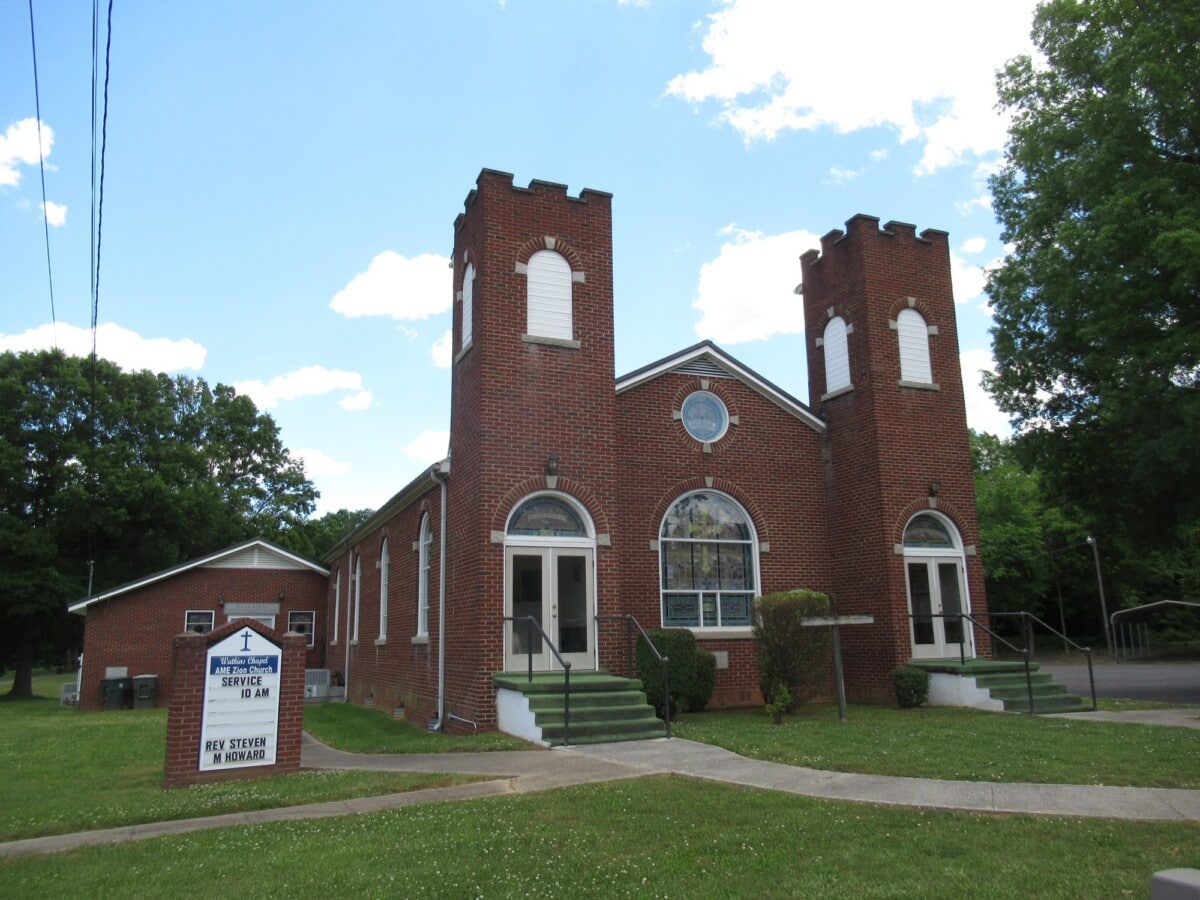
Watkins Chapel AME Zion Church,
Mooresville, Iredell County, listed 4/13/2022
Watkins Chapel AME Zion Church is significant at the local level with a Period of Significance ranging from 1942, the year the church was rebuilt, until 1964, the date of construction for the education wing. It is significant under Criteria A and C in the categories of Ethnic Heritage: Black, and Architecture. It also falls under Criteria Consideration A as it derives primary significance from architectural distinction and historical importance. Watkins Chapel AME Zion Church is a congregation established during a period of explosive growth of the denomination in the South and particularly in North Carolina. Though aided by strategic employment of clergy resources, the growth is more of a testament to the response of emancipated African Americans—an expression not only of faith, but of freedom from the strictures and hypocrisy of white-dominated churches. Architecturally the Romanesque Revival-style building exemplifies several trends in early 20th century African American churches: a plan adapted for services focused on music and preaching, two crenellated towers on a simple front-gabled form, and the tradition of rebuilding or cladding frame structures with brick as resources allowed.
In Western North Carolina
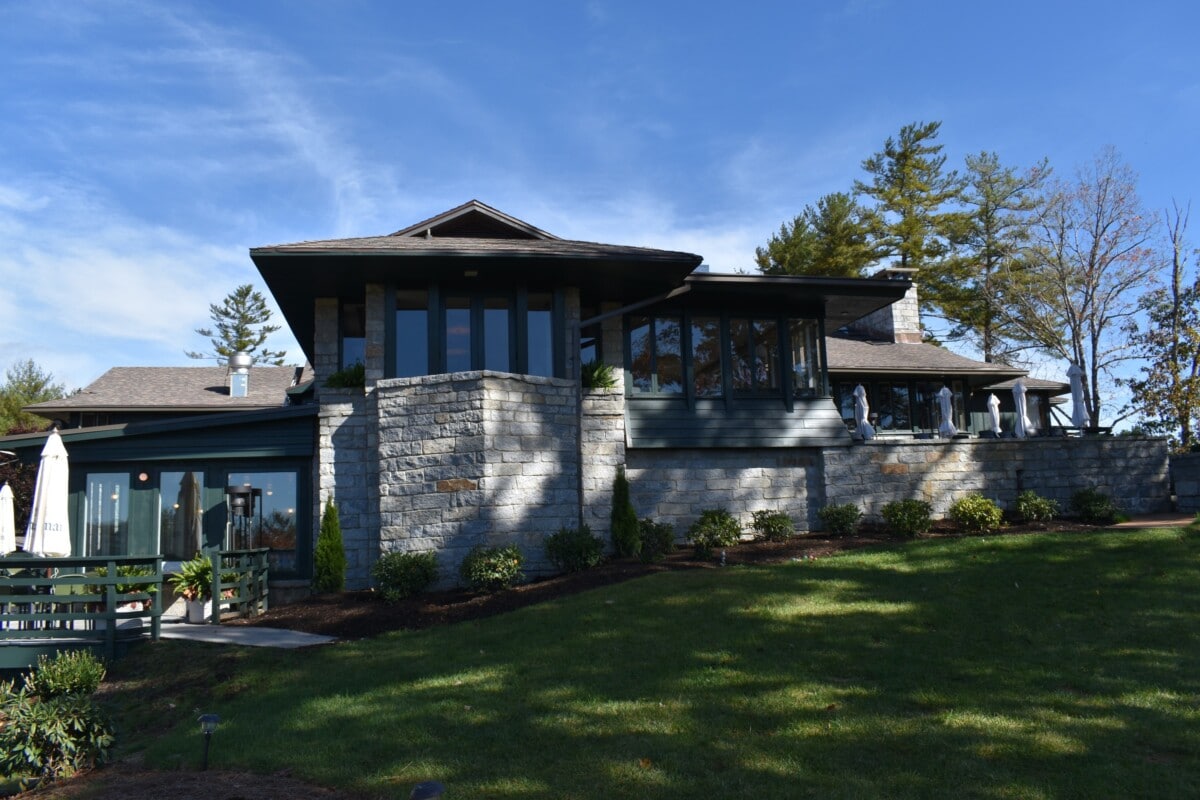
Highlands vicinity, Macon County, listed 4/13/2022
Skyline Lodge is locally significant under Criterion A for Entertainment/Recreation as a hotel built to capitalize upon the tourist industry in Highlands and Macon County. It is also locally significant under Criterion C as a rare, and highly intact example of a Mid-Century Modern, resort-style hotel that demonstrates the importance of the Wrightian influence on Modernist architecture. Arthur J. Kelsey, a Cincinnati-based architect who admired the design tenets of Frank Lloyd Wright, drafted the original plans for the Lodge beginning in 1936. Following the death of the original developer in 1938, the Lodge sat partially unfinished. In 1965, Skyline Lodge was finally opened to the public after new owners hired Robert Opsahl, an architect from Clearwater, Florida, to complete the interiors of the Main Lodge and the original 1938 room wing. Opsahl also reconstructed the former Garage Wing to include guest rooms and added service spaces, a reception office, and an additional guest room wing. The period of significance spans two time frames: 1936 to 1938 when the project was first conceived, partially constructed, and then abandoned; and 1965 to 1972 which encompasses the project’s completion and successful operation as a mountain-top resort.
About the National Register of Historic Places
The National Register of Historic Places is the nation's official list of buildings, structures, objects, sites, and districts worthy of preservation for their significance in American history, architecture, archaeology, and culture. The National Register was established by the National Historic Preservation Act of 1966 to ensure that as a matter of public policy, properties significant in national, state, and local history are considered in the planning of federal undertakings, and to encourage historic preservation initiatives by state and local governments and the private sector. The Act authorized the establishment of a State Historic Preservation Office in each state and territory to help administer federal historic preservation programs.
In North Carolina, the State Historic Preservation Office is a unit of the North Carolina Department of Natural and Cultural Resources. Dr. Darin Waters, the Department's Deputy Secretary of Archives, History, and Parks, is North Carolina's State Historic Preservation Officer. The North Carolina National Register Advisory Committee, a board of professionals and citizens with expertise in history, architectural history, and archaeology, meets three times a year to advise Dr. Waters on the eligibility of properties for the National Register and the adequacy of nominations.
The National Register nominations for the recently listed properties may be read in their entirety by clicking on the National Register page of the State Historic Preservation Office website. For more information on the National Register, including the criteria for listing, see this page.
About the North Carolina Department of Natural and Cultural Resources
The N.C. Department of Natural and Cultural Resources (NCDNCR) is the state agency with a vision to be the leader in using the state's natural and cultural resources to build the social, cultural, educational and economic future of North Carolina. NCDNCR's mission is to improve the quality of life in our state by creating opportunities to experience excellence in the arts, history, libraries and nature in North Carolina by stimulating learning, inspiring creativity, preserving the state's history, conserving the state's natural heritage, encouraging recreation and cultural tourism, and promoting economic development.
NCDNCR includes 27 historic sites, seven history museums, two art museums, three science museums, three aquariums and Jennette's Pier, 41 state parks and recreation areas, the N.C. Zoo, the N.C. Symphony Orchestra, the State Library, the State Archives, the N.C. Arts Council, the African American Heritage Commission, State Preservation Office and the Office of State Archaeology, and the Division of Land and Water Stewardship. For more information, please visit www.ncdcr.gov.


















